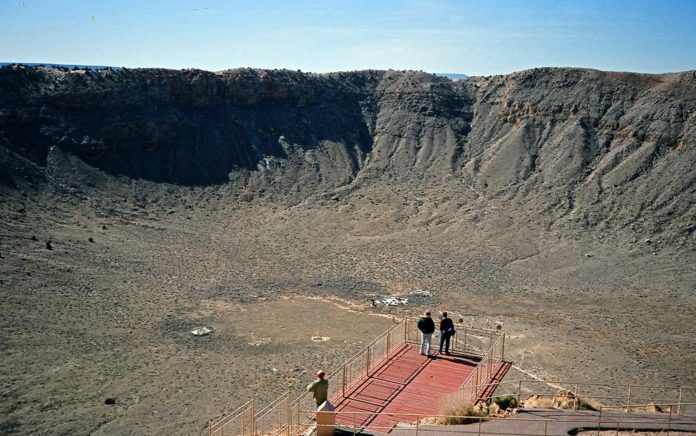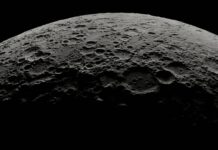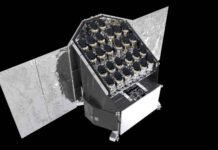
It’s one of Earth’s most puzzling mass extinctions: How could the powerful dinosaurs be wiped out so suddenly 66 million years ago? Not just the dinosaurs, but three-quarters of Earth’s life vanished. Was it an asteroid impact or a volcanic eruption that dramatically ended the Cretaceous era?
Researchers decided to step back and let a computer tackle the mystery. The surprising finding was that not the asteroid, but the eruption of the Deccan Traps might have been the fatal blow to Earth’s life. Around the Cretaceous-Tertiary transition, a region spanning 500,000 square kilometers in western India erupted. These volcanic activities persisted for a million years, releasing vast amounts of CO2 and rapidly warming the Earth. The Deccan Traps area consists of a 2-kilometer-thick layer of solidified basalt.
Volcano vs. Meteorite
According to the latest theory, these volcanic eruptions set the stage, and the meteorite delivered the coup de grace. Debris and dust in the atmosphere post-impact might have blocked sunlight, causing a decade-long dark and cold spell on Earth, leading to widespread extinctions. But this remains uncertain.
A computer model might provide clarity. Instead of blaming the volcanoes or the asteroid and explaining why, the goal was to minimize human bias, says computational geologist Alexander Cox of Dartmouth College.
Deep-sea Drilling
Evidence comes from deep-sea sediment cores containing geological traces indicating lethal amounts of atmospheric and oceanic gases, notably CO2 and sulfur dioxide. However, these gases could originate from either the volcanic eruptions or the asteroid impact, which caused surface rocks to burn.
Mathematical Model
To determine the contribution of each catastrophe, a specific statistical model was used: the Markov Chain Monte Carlo method. This calculates the likelihood of different emission scenarios. The solution emerges as simulation results align closely with geological observations. The research was accelerated by running simulations on 128 processors in parallel. “All processors compared their end results, similar to classmates comparing answers,” says Cox. This made calculations that normally took a year to be executed in days.
Foraminifera
Data from deep-sea sediment cores, dating 67 to 65 million years ago, revealed foraminifera, microorganisms with shells containing different carbon and oxygen isotopes, reflecting the ocean’s chemical composition of that period. These can be used to infer past temperatures and how much carbon was exchanged between the atmosphere, ocean, and land.
The computer simulations indicated that gases released by the volcanoes were sufficient to account for temperature changes and carbon cycles deduced from foraminifera. Additionally, the asteroid that created the Chicxulub crater in modern-day Mexico likely did not release as much carbon or sulfur dioxide as previously believed.
Skeptical Scientists
Many scientists remain unconvinced. Sierra Petersen from the University of Michigan comments that using such a model is elegant and offers a comprehensive approach. However, the model’s output depends on its input. Petersen argues that foraminifera might not be the perfect proxy to deduce past temperatures. Oxygen isotope ratios can change due to other factors, not just temperature. Also, she critiques the study’s conclusion, suggesting that the asteroid might still have had a lethal effect, releasing massive clouds of soot and dust into the atmosphere.
A Step Closer? Although this study adds an interesting perspective to the debate on the dinosaurs’ demise, it doesn’t definitively settle the ‘volcanic eruption vs. meteorite impact’ discussion but perhaps gives a slight edge to the volcanic theory.










